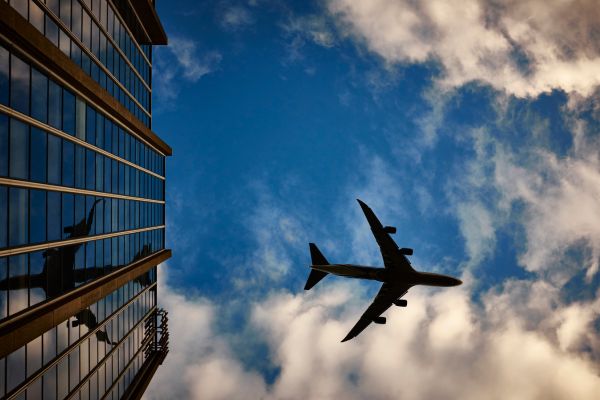Canada, renowned for its vast landscapes, diverse cultures, and vibrant cities, is a dream destination for many travelers. Whether you are visiting for its natural beauty, seeking higher education, or exploring new business opportunities, planning your journey to Canada requires careful consideration. The best way to travel to Canada depends on various factors, including your starting point, budget, travel preferences, and purpose of visit. This comprehensive guide will explore the different travel options available, visa requirements, and tips for a seamless journey to the Great White North.
Air Travel: The Most Popular Option
Advantages of Air Travel
Air travel is the most common and convenient way to reach Canada, especially for international travelers. With numerous international airports spread across the country, flying provides direct access to major Canadian cities such as Toronto, Vancouver, Montreal, and Calgary. The primary advantages of air travel include:
- Speed and Convenience: Air travel is the fastest mode of transportation, allowing you to cover long distances in a relatively short time.
- Global Connectivity: Major airlines operate direct flights to Canada from various parts of the world, ensuring easy connectivity.
- Comfort and Amenities: Modern aircraft are equipped with amenities such as in-flight entertainment, comfortable seating, and meal services, making long-haul flights more pleasant.
Major International Airports
Canada boasts several major international airports that serve as key entry points for travelers:
- Toronto Pearson International Airport (YYZ): Located in Ontario, it is the busiest airport in Canada and a major hub for international flights.
- Vancouver International Airport (YVR): Situated in British Columbia, it is a key gateway to the Pacific region.
- Montréal-Pierre Elliott Trudeau International Airport (YUL): Located in Quebec, it serves as a primary entry point for travelers from Europe and other parts of the world.
- Calgary International Airport (YYC): In Alberta, it provides access to the Rocky Mountains and the western provinces.
Booking Your Flight
When booking a flight to Canada, consider the following tips:
- Plan Ahead: Book your tickets well in advance to secure the best fares and availability.
- Compare Airlines: Use online travel agencies and comparison websites to find the best deals and flight options.
- Check Baggage Allowances: Ensure you are aware of the baggage policies of your chosen airline to avoid any additional charges.
- Consider Layovers: If direct flights are expensive, look for flights with layovers that might offer more affordable options.
Land Travel: An Alternative for Nearby Countries
Traveling from the United States
For travelers from the United States, land travel to Canada is a feasible option, especially for those residing near the border. There are several entry points along the Canada-US border where travelers can cross by car, bus, or train. Key points to consider include:
- Driving: If you prefer driving, ensure your vehicle is in good condition, and you have the necessary documentation, such as a valid driver’s license, vehicle registration, and insurance.
- Bus Services: Numerous bus companies operate routes between the US and Canada, providing an affordable and comfortable travel option.
- Train Travel: Amtrak operates train services from the US to Canada, offering scenic routes and a relaxed travel experience.
Required Documentation
When crossing the border by land, ensure you have the required documentation:
- Passport: A valid passport is essential for entry into Canada.
- Visa or Electronic Travel Authorization (eTA): Depending on your nationality, you may need a visa or an eTA to enter Canada. Check the official Canadian government website for specific requirements.
- COVID-19 Requirements: Stay updated on the latest travel advisories and health regulations related to COVID-19.
Sea Travel: A Unique Experience
Cruise Travel
For those seeking a unique travel experience, cruises to Canada are an excellent option. Cruises offer a leisurely and luxurious way to reach Canadian ports, such as Vancouver, Halifax, and Quebec City. Key points to consider include:
- Cruise Lines: Several major cruise lines offer routes to Canada, including Royal Caribbean, Norwegian Cruise Line, and Holland America Line.
- Scenic Routes: Cruises often include scenic routes along the Canadian coastline, allowing you to enjoy stunning landscapes and wildlife.
- Onboard Amenities: Cruises offer a range of amenities, including fine dining, entertainment, and recreational activities.
Ferry Services
For travelers in the northern United States, ferry services provide another option for reaching Canada. Ferries operate across various points, such as between Maine and Nova Scotia or between Seattle and Victoria. Key considerations include:
- Schedules and Routes: Check ferry schedules and routes in advance to plan your trip accordingly.
- Vehicle Transport: Many ferry services allow you to bring your vehicle, providing flexibility for further travel within Canada.
- Booking: Reserve your ferry tickets early, especially during peak travel seasons.
Visa and Immigration Requirements
Understanding Visa Requirements
Before traveling to Canada, it is crucial to understand the visa and immigration requirements based on your nationality and purpose of visit. The Canadian government offers different types of visas and permits:
- Visitor Visa (Temporary Resident Visa): Required for tourists and short-term visitors. Apply online or at a Canadian consulate or embassy in your country.
- Electronic Travel Authorization (eTA): Required for visa-exempt travelers arriving by air. Apply online before your trip.
- Study Permit: Required for international students enrolled in Canadian educational institutions. Apply through the designated online portal.
- Work Permit: Required for individuals planning to work in Canada. Apply based on the type of work and job offer.
Application Process
The application process for visas and permits typically involves the following steps:
- Determine Eligibility: Check the official Canadian government website to determine the specific requirements for your visa type.
- Gather Documents: Collect the necessary documents, including a valid passport, application forms, proof of funds, and any supporting documents.
- Submit Application: Submit your application online or at the designated visa application center.
- Biometrics and Interviews: Some applications may require biometrics (fingerprints and photos) or an interview at the consulate.
- Wait for Processing: Processing times vary based on the visa type and application volume. Check the official website for estimated processing times.
- Receive Decision: Once your application is processed, you will receive a decision. If approved, ensure you understand the conditions of your visa or permit.
Preparing for Your Trip
Health and Safety
When preparing for your trip to Canada, consider the following health and safety tips:
- Travel Insurance: Purchase comprehensive travel insurance that covers medical emergencies, trip cancellations, and lost luggage.
- Vaccinations: Check if any vaccinations are required or recommended for travel to Canada.
- COVID-19 Protocols: Stay updated on the latest COVID-19 protocols, including vaccination requirements, testing, and quarantine regulations.
Packing Essentials
Pack wisely for your trip to Canada, keeping in mind the weather and activities you plan to undertake:
- Clothing: Bring layers of clothing to accommodate varying weather conditions. Pack warm clothing for winter visits and lighter attire for summer.
- Travel Documents: Carry all necessary travel documents, including your passport, visa, travel insurance, and any required permits.
- Electronics and Chargers: Ensure you have the appropriate chargers and adapters for your electronic devices.
Money Matters
Prepare for financial transactions during your stay in Canada:
- Currency: The official currency is the Canadian Dollar (CAD). Exchange your money in advance or use ATMs upon arrival.
- Credit and Debit Cards: Most establishments accept major credit and debit cards. Inform your bank of your travel plans to avoid any issues with card transactions.
- Budgeting: Plan your budget to cover accommodation, transportation, meals, and activities.
Conclusion
Traveling to Canada offers an opportunity to explore one of the most beautiful and diverse countries in the world. Whether you choose to fly, drive, take a train, or embark on a cruise, each travel option has its unique advantages. Understanding visa requirements, preparing for health and safety, and planning your finances are essential steps to ensure a smooth and enjoyable journey. With careful planning and preparation, your trip to Canada will be a memorable and enriching experience.







